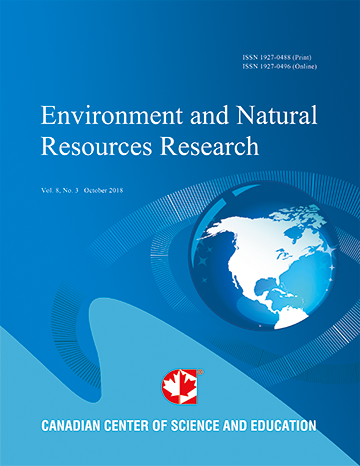Integrated Use of Geological, Geophysical, Radiocarbon and Stable Isotopes Data for Tracing the Conduit Flow Paths in a Small Karstic Aquifer: Poocher Swamp Freshwater Lens, South Australia
- Nara Somaratne
- Simon Mann
Abstract
An integrated approach combining lithological logs, downhole geophysics, electromagnetic survey and the distribution of radiocarbon (14C) and the stable isotopes of water molecules (18O) were used to identify the conduit flow paths of a small freshwater lens. Lost circulation zones, where drilling fluid flows into geological formation instead returning up the annulus recorded during water well drilling, were considered as the major fracture zones. The presence of high porosity zones within boreholes were identified using caliper, gamma and neutron logs. These methods were used to identify the depth intervals at which cavities and the existence of conduit porosity within the boreholes. Transient electromagnetic (TEM) method was used to investigate resistivity anomalies in the profiles along nine pre-determined lines across the freshwater lens. Resistivity anomalies were related to borehole information and other surface features such as sinkholes. Low resistivity zones of the TEM tomography sections had excellent correlation to fracture zones identified during well drilling, and downhole geophysical logs. Similarly, high resistivity zones in the profiles correlate well with the zones of cemented or recrystallized limestone identified from the lithological logs. The interpreted resistivity anomaly accurately depicts depth to watertable at 15-18 m, presence of main fracture zone at 20-25 m, presence of possible conduits flow paths and the cemented or recrystallized limestone below 35 m depth. The 14C, 13C and 18O signatures of the groundwater confirm the presence of conduits and potential pathways of preferential flows. This investigation illustrates the effectiveness using an integrated approach to trace the conduit flow paths in karst aquifers. The information gained from the study is currently being used for the management of the freshwater lens.
- Full Text:
 PDF
PDF
- DOI:10.5539/enrr.v6n3p119
Journal Metrics
Google-based Impact Factor (2016): 6.22
h-index (November 2017): 12
i10-index (November 2017): 19
h5-index (November 2017): 11
h5-median (November 2017): 12
Index
Contact
- Emily LinEditorial Assistant
- enrr@ccsenet.org
